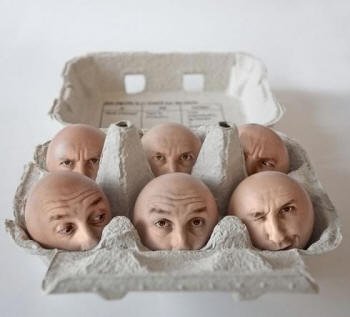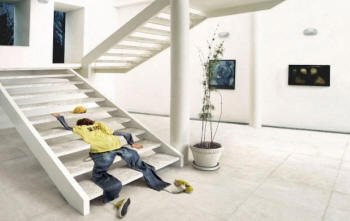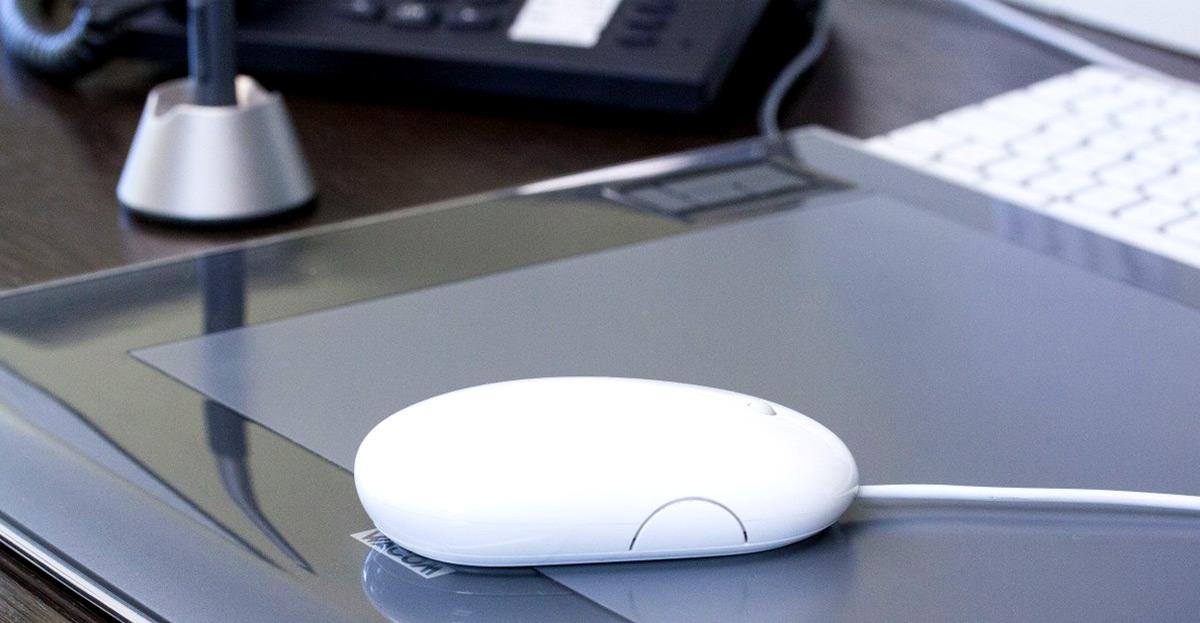Blog of positioning tricks, web design and graphic design.
101 SEO web positioning tips and tricks

1.- Choose a domain that contains the keywords for which you want to position yourself. The shorter the domain the better. Of course it is its own (.com, .net, .org, .es, .info, are good domains).
2.- Publish original content (never duplicated), useful and relevant to users.
3.- Update your blog regularly (if it can be better every day). This will increase the tracking frequency of Google robots in your blog.
4.- Getting links is important, but it is much more if they are quality links. It is better to have 1 quality link to our site than 100 that do not have it.
5.- Search links from sites related to your theme. The similarity of thematic between the pages that are linked is one of the decisive aspects when measuring the quality of the links.
6.- Use the registration in directories, but only in quality directories, with acceptable PR on the page where your link will be. Use the keywords you want to position in the "blog name" field.
7.- Use friendly urls so that they are easily readable for search engines. In this sense, the addresses of the type: http://tublog.com/categories/posicionamiento will be better than those of the type: http://tublog.com/categorias.php?id=69&texto=posicinamiento. Google robots find it hard to read these more complex urls.
8.- Include the keywords in the url of each article. It is one of the first sites where search engines try to find the keywords and we have to facilitate the work.
9.- Use the keywords you have defined for your site also in the text but do not abuse them. Mentioning them a couple of times, once at the beginning of the article and once at the end, is enough.
10.- It is convenient to make internal links, but not abuse them. We will only put the necessary ones, that have coherence and taking care that they do not shoot. It is advisable not to exceed 100 internal links per page.
11.- Use Google's webmaster tools paying special attention to sitemaps, which is good to update from time to time.
12.- Use descriptive titles and tags that contain the keywords.
13.- Use natural language, write for readers thinking about search engines and not vice versa.
14.- Avoid, if possible, obey a large number of incoming links in a short period of time, the links must be obtained over time and naturally. If not, you could be penalized.
15.- Analyze the statistics of your site to know the keywords that are working and enhance them.
16.- Simulate Google searches for your keywords and thus see what position you occupy. Focus on positioning those keywords that you see with possibilities of reaching the top positions in the search engine.

17.- Use lightweight HTML files. These are easier to track by search engines and that will help a lot. Ideally, the html files do not exceed 70 k.
18.- Do not leave out the "Long Tail". It consists of positioning very well some articles with secondary keywords or even phrases. They give fewer visits but are easier to position. If you do it for several articles it will give you a good number of visits.
19.- Separate the words with middle hyphens (especially in domains and urls). The underscores do not imply word separation for Google, so use the middle hyphens.
20.- Place the title tag on the links, so that when you hover over them, a description of the content of the page you are pointing to appears. If in that description are the keywords better.
21.- Flee from Flash content. HTML content is much more search engine friendly. If you have flash content, create an alternative content in html.
22.- Try to have labels on the sidebar that are (or include) your keywords.
23.- Never forget that the best links are those that come from quality sites of the same theme. If you get a few of these you will have advanced more than if you get hundreds from sites of other themes and / or of low quality. The links within articles generally transfer lower Page Rank but have greater relevance in terms of positioning since they are interpreted as more natural.
24.- Include the keywords in the title tags (H1, H2, H3, ...). There they are more visible to search engines.
25.- Use the most common typefaces. Google values usability by other users. Therefore we must use the standard fonts (arial, verdana, tahoma, ...).
26.- Do not stop adding content to your site, consistency and quality are fundamental. The more pages you have devised in the search engines, the more relevant your site will be and the higher you will appear in the searches. The need for content should never lead you to stop having original content.
27.- Some experts say that the age of the sites that link us has its importance. It is not proven but it is best to alternate links from old sites with others from more recent sites.
28.- Try that the incoming and internal links are built for search engines; with "title" tag in text links and "alt" tag in image links.
29.- Both CSS and HTML codes must be clean, with no unclosed or unnecessary elements. Check them out.
30.- Use tags that facilitate search engine tracking, for example, noembed and noscript tags.
31.- Take care of the text that is around the internal links. Some say that links have more weight if, in addition to containing keywords, you are surrounded by them or have them nearby. Not only does the anchor text of the link itself matter, but also the text around it.

32.- The rule on the left: Both in domains, as in titles, as in links, place the keywords the more to the left the better. Google robots start searching on the left. Make it easy.
33.- Separate CSS codes, javascript, ... etc, in different files. Each sheep with its partner not to confuse the robots.
34.- Avoid at all costs techniques that may involve penalties from google. In that link the most common are listed and described.
35.- Do not use the ID parameter. This should not appear in any url unless it is actually an ID session.
36.- Be careful with the forms or pages step by step for access to others. The robots do not know how to fill in forms and will not reach the content. Therefore they will not idexar those pages.
37.- Provides each page with a "title" tag appropriate to its content.
38.- HTML index as an alternative to the sitemap. An alternative to creating complicated sitemaps is to create a page (html) where you can listen to all the pages that make up the site and link it from home. Some people believe that this is better than doing it automatically through sitemaps, this requires work and evidence but the pages of those who apply this theory are usually very well positioned.
39.- The title and keywords tags must be descriptive and concise using a high keyword density. The description tag can be more descriptive.
40.- Put a not very extensive title tag, we recommend that you have no more than 35 characters (counting spaces) and with the key key words. Make it easy for search engines.
41.- Check the broken links, Google does not like them and will diminish relevance to your site if it has them. Consider checking your site every 3 months for example.
42.- Host your site in a quality hosting. Google gives importance to the response time when assessing a site. If the "spiders" find your hosting dropped, they will associate it with low quality and lose relevance.
43.- Use well differentiated colors for the background and for the background since if Google interprets that you are trying to hide content it will penalize you.
44.- The urls of the articles, from the point of view of positioning, should be as short as possible.
45.- Analyze the most used keywords for our theme in order to form the anchor text of the incoming links with them. Keyword analysis tools such as Google Insights for search or the Adwords keyword tool are essential. You can also check our toolkit guide for keywords.
46.- Do not neglect the positioning for word strings formed by two, three and up to four or five words. Users usually use more than one word in their search and it is not customary to position for word strings. This can give us an advantage over the competition.
47.- Invite to link your blog or your articles. One way is to place the code to link well visible on the sidebar and another to invite the article to be linked (providing the link code) at the end of each post.
48.- Take care that the names of the files are descriptive, these are much easier to recognize than the traditional ones, home, 1, 2, ... etc.

49.- Use the keywords in the texts but in moderation. A percentage of keywords between 3% and 6% of the total is a good proportion.
50.- Write naturally, so that everyone can understand it, without abusing technicalities and elaborate expressions. This will make your texts unique to readers and search engines.
51.- Periodically check the positioning of your blog and keep track of the positions you occupy for the main keywords you want to position. This will allow you to detect deviations and redirect them. Do not do it when you are logged in to Google since your positions will be higher, log out and check it later.
52.- Be generous by quoting. The more you quote, the more they will quote you. This way you will receive numerous links without trying.
53.- Do not use tables unless it is absolutely necessary. Search engines are choked.
54.- Use a dedicated IP (unique for that domain). There are studies, like this one, that show that a dedicated IP improves positioning.
55.- The anchor text of the incoming links varies. There is a belief that the anchor text must always be the same, but the truth is that it is more favorable to rotate it. Otherwise we even run the risk of being penalized.
57.- Try to increase the trustrank. This is an index that values aspects such as the age of the blog, visits and data on the domain. Maintaining a high number of visits, not spamming or registering the domain for long periods helps to raise this index.
58.- Place your blog under a quality domain (.com, .net, .org, .es, .ar, ...). Flee from hosting the blog in free domains.
59.- Create a long-term SEO strategy and complement it with a good long-term content strategy. If the content is good and you do SEO, success is sure.
60.- Look for the deep link or deep links. Incoming links in addition to the home of the site must go to the internal pages. Excessive links to home can even carry a Google penalty.
61.- If exchange of links (agreed with other sites) monitors the number of outbound links that site has. The smaller the more Page Rank flow will reach you.
62.- Use SEO optimization tools. These will help you improve aspects such as keyword density, the quantity and quality of metatags, the quality of the title, the number of pages the site contains, ... etc.
63.- Be careful with the sale of links, if you do it it must be concealed and with time intervals. Otherwise you run a serious risk of being penalized.
64.- The keyword tools help us know which words are easier to position and which ones are more difficult. If you use them you will have very useful information.

668.- Use titles that answer questions. "How to do ...", "solution to the problem of ...", "What is a ...", ..., are very introduced phrases in search engines. If we have them as a title and as a url, we will have more possibilities for Internet users to find our site.
69.- Do not use more than one script in the domain. Buying a scripted domain can be a good alternative if the one we want is taken and we believe that the words should be those, but we should not abuse the scripts in the domain. Of course, the script must be medium and not low.
70.- Do not abuse the ROS (run of site link) links, for example in the sidebar or in the footer. These have the advantage that they are on all pages but have less relevance to Google than those within texts since the latter are, or at least seem, more natural.
71.- Take care of the flow of Page Rank by means of internal links that go from the home to the urls to which you want to give more weight and from the different entries to the home, always with the appropriate keywords and without abusing.
72.- Do not follow anyone's advice, it is common to find unfounded rumors that can make us make wrong decisions. There is no one who faithfully knows the criteria of Google and they change continuously, therefore, SEO is learned with experience and based on trial and error.
73.- If you decide to learn SEO yourself visit quality sites and, as far as possible and even if they are in English, those of the great experts and connoisseurs of the subject such as Matt Cutts, threadwatch or Pandia. If you search you will find many more.
74.- The indiscriminate registration in directories is not advisable, but if you are going to register in many, do it progressively.
75.- In addition to taking care of the incoming links you must take care of the outgoing ones; avoid linking pages of unrelated content at all costs, especially if they are from casinos or adults.
76.- Do not skip any of the 4 steps of any SEO strategy: Analysis (What do we want?), Strategy (How are we going to do it?), Execution (disciplined and constantly) and measurement (Has it worked?) . If it has not worked, analyze the causes and start again. If it has worked, you will be in the first positions or on their way.
77.- Help yourself with the large number of websites and SEO blogs in Spanish and draw your own conclusions.
78.- When exchanging links, take into account the frequency of updating the blog. This is important for two reasons; in the first place because it is a parameter that Google takes into account when assessing the quality of a blog and secondly because if the link is in the blogroll, it will be also in all the others and therefore the more entries generate more links we will have.
79.- Variety of IP's. The more varied the IP's from where we receive the links the better. This is not easy to control but a good way to obtain this variety is to make exchanges with people from other countries.
80.- Age of the domain. It is another aspect highly valued by Google. If you doubt between buying a new domain or transferring an existing one, the transfer is usually better because it is older. As long as it's not penalized, of course.
81.- Sign up for all possible search engines. Do not settle for signing up for Google, there are other important search engines like Live MSN or Yahoo. Keep in mind that in these two search engines it is much easier to position yourself, having a domain that contains the keyword, using that keyword in the texts, getting links under it and updating a bit we can position ourselves in Live or Yahoo. Therefore, it is important to register with Yahoo and register with MSN.

82.- Always follow your line. If you are doing a good positioning, with well-founded criteria and techniques "white hat" (good SEO practices) keep your line. It may be that you lower positions due to changes in the Google algorithm "Dewey", even for a good work of the competition, or that you are tested a few weeks putting your site in the "sandbox", but if you continue publishing quality content and you maintain good SEO practices, you will end up.
83.- Work on the usability of your site. Details such as posts containing the date or that the list of categories is not too extensive are favorably valued by Google.
84.- Do not carry out any of the SEO techniques that can cause you to be penalized by Google always use "white hat" techniques and never "black hat".
85.- Do not skimp on hosting. You have to prevent the host from falling, Google spiders do not like to reach a site and find nothing. If you use a free hosting make sure it is of quality.
86.- Closeness of the keywords. If a text has several keywords, ensure that they are together, in the same paragraph. Also, if it can be, try to have the main keyword also appear at the end of the text.
87.- Blogs whose contents can be read through mobile devices are better valued by Google. Make yours one of them.
88.- Add to your blog some system of pings-standards, this will help you spread your content as soon as it is written.
89.- Distribute the relevance (PR) of your site among all its pages. This is not only achieved through links to internal pages. Tag clouds, tags or recent or featured articles in the blogroll are a good way to do it.
90.- Do not forget the importance of the Google image search engine, each time its importance is greater and gives more visits. To position images you must place the "alt" tag and it must be equal to the name of the file that, of course, must contain the keywords.
91.- Provoke comments and answer them must be a daily task. More comments means more content and therefore better evaluation of the site and more words and key phrases. Finish the posts with a question or phrase that encourages commenting and responds to all comments.
92.- First link theory. Some experts say that if there are more than two links to the same page, Google only considers the first one. Keep that in mind because there seems to be experiments to prove it.
93.- Take care of the length of post titles. These must not exceed 65 characters. But do not forget that it is essential that the titles are descriptive and contain the keywords.
94.- Be self-taught. The world of SEO is so intuitive and changing that, although you must have a theoretical basis, to be a good SEO you must be updating day by day. A good way to do this is to conduct experiments with our sites.
95.- Use the nofollow attribute for internal links. In this way you will control to which pages the flow of PR is directed and therefore the relevance. For example, it makes no sense that links to registration or contact areas have dofollow links since there is a PR that we need to position other pages.
96.- Diversify positioning strategies. It is common to see how people position one or several generic keywords in order to get many visits, that's fine, but we must not forget that positioning phrases of 3 or 4 words is easier, also gives visits, and has a great advantage, which is that we are winning readers who are looking for exactly what we offer.
97.- Watch the origin of your links. Google takes into account the geographical area where the incoming links come from when positioning. If for example you have a Spanish music site and you receive links from sites in Argentina and Chile, your site will upload positions on google.com.ar and google.com.cl but not on google.es which is the place where you really want to position it For the kind of music you talk about. If the web is, for example, about curiosities, this will be much less important.
98.- Links from the same IP have almost no value and links from sites with the same A, B, and C simultaneously (hosted on the same server) have little value.
99.- Look for lasting links. If you have decided to exchange links, ensure that these are durable since one of the parameters that Google uses to detect unnatural links is the time of pampering.
100.- If you are going to change your domain, do it through redirection 301, this is the only type of redirection that maintains search engine positioning and backlinks.
101.- Never despair. Work and perseverance are the keys to a good SEO positioning.
These are the tips that we know
Tags:
blog design, blog positioning, web design, web development, graphic design, search engine optimization, web positioning, creative design, banner design, Joomla programming, content management programming, cms, photo retouching, web positioning blog



